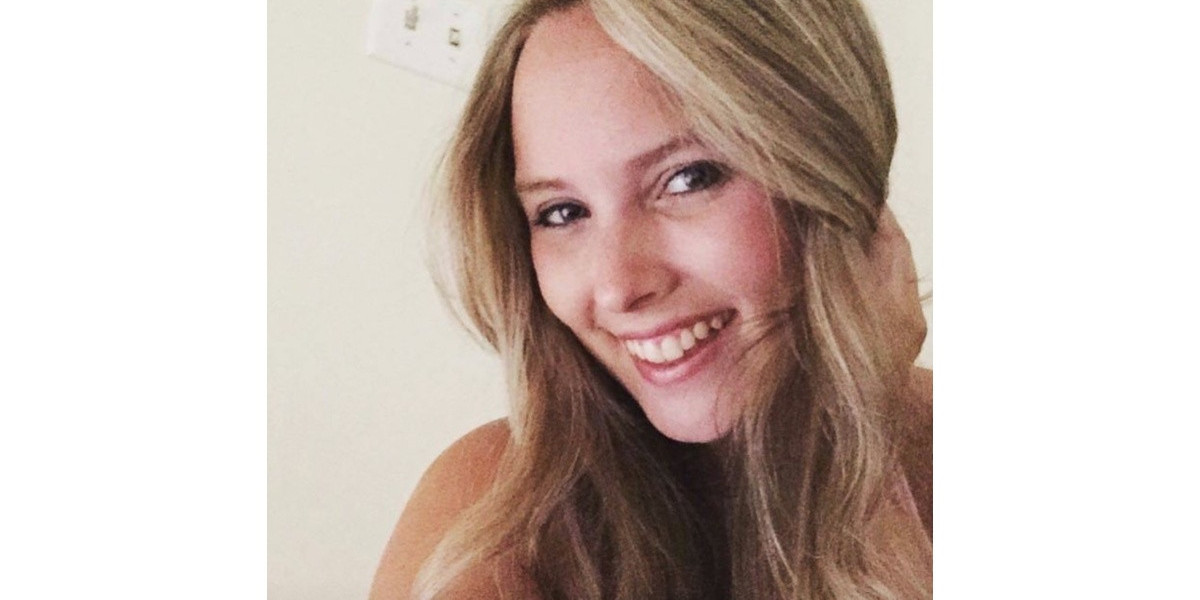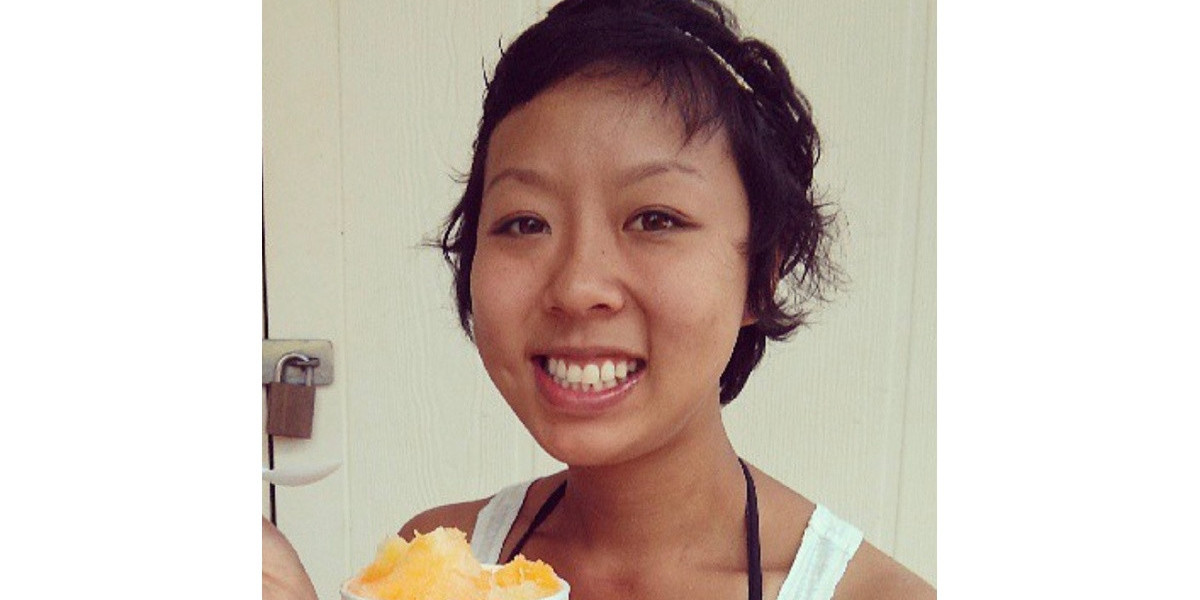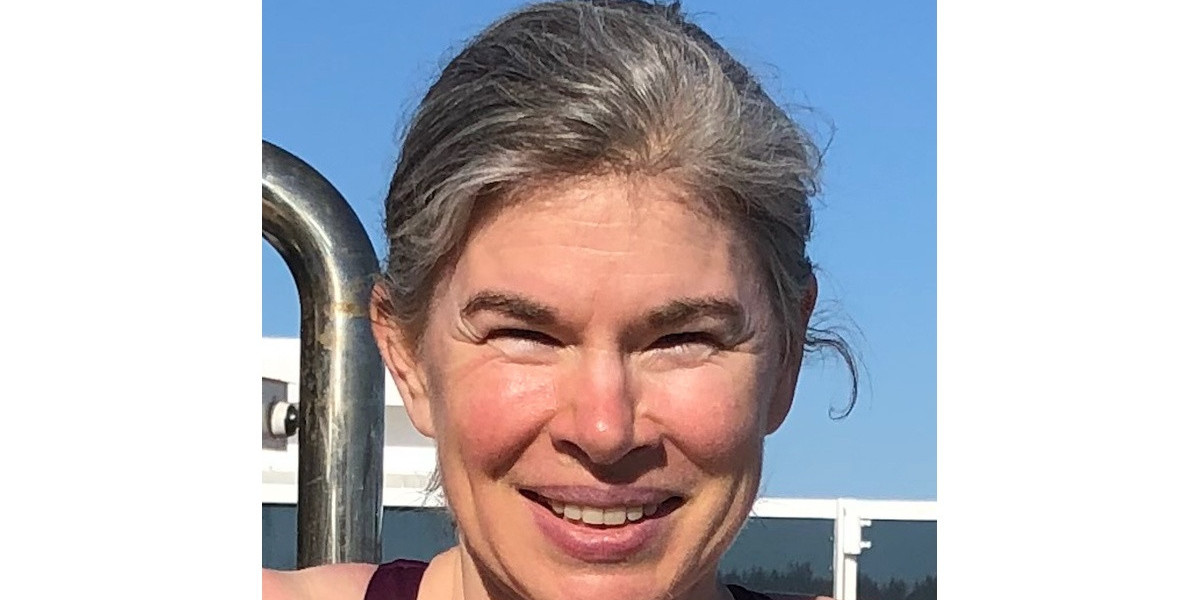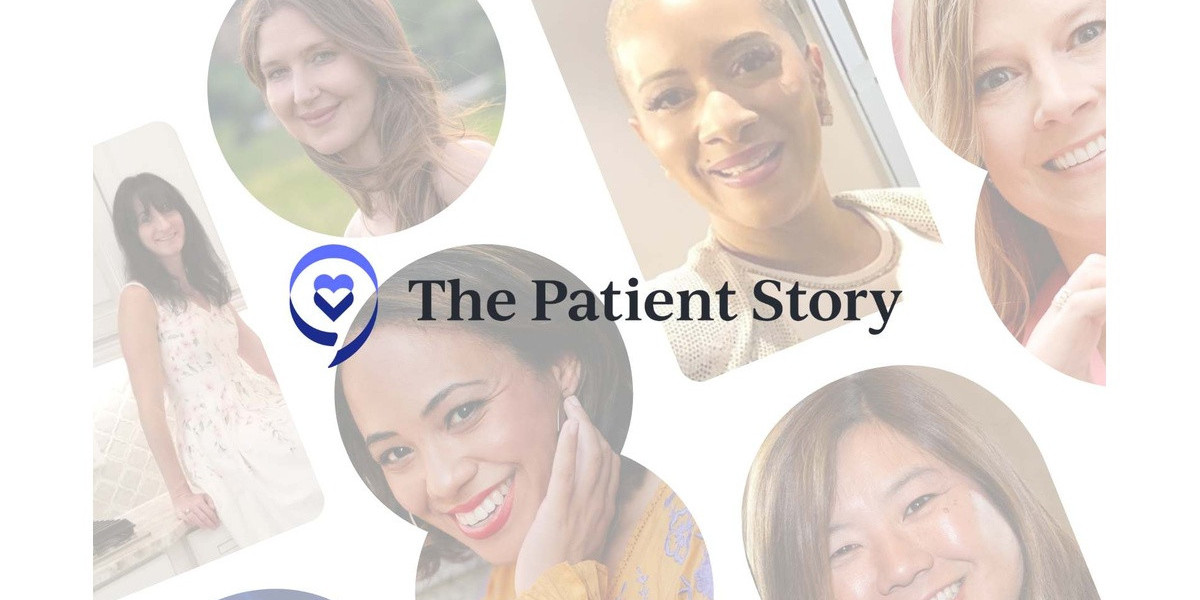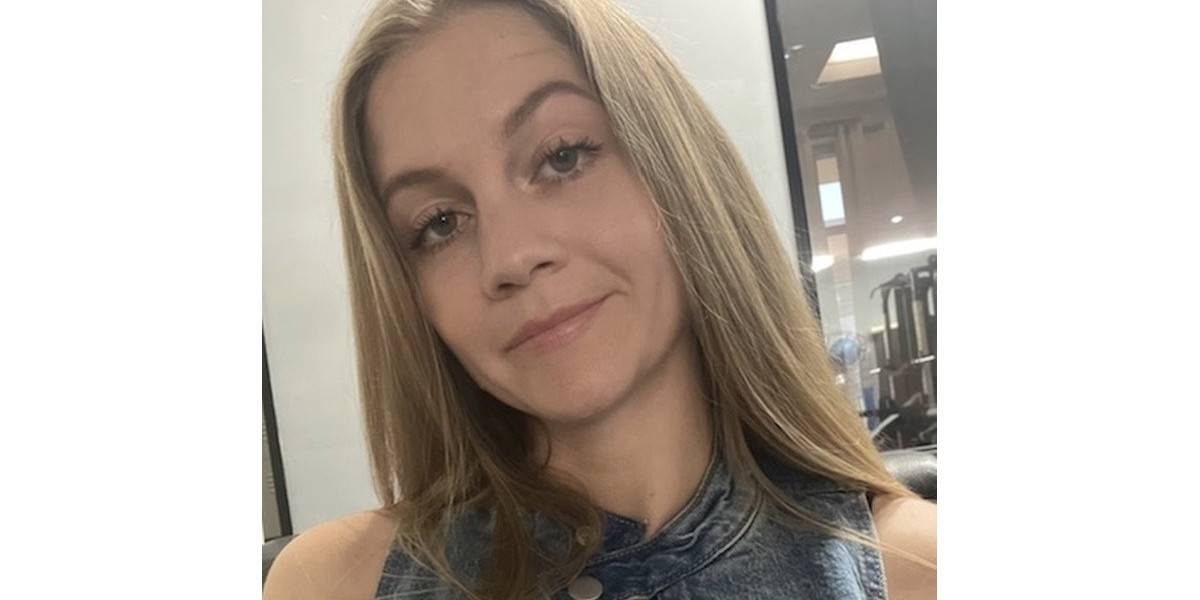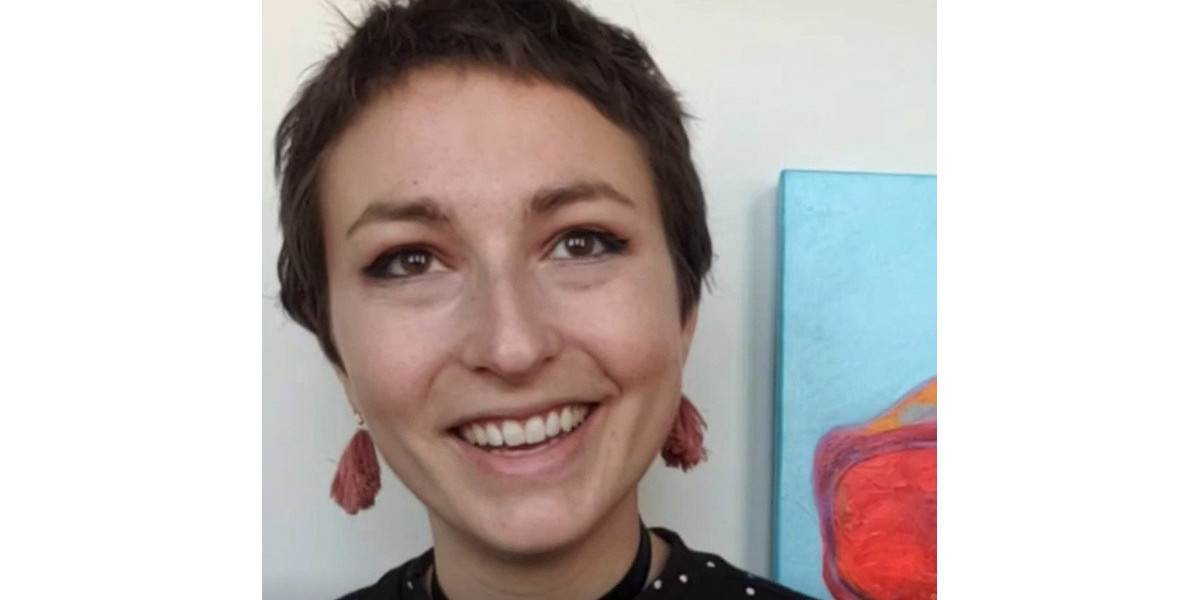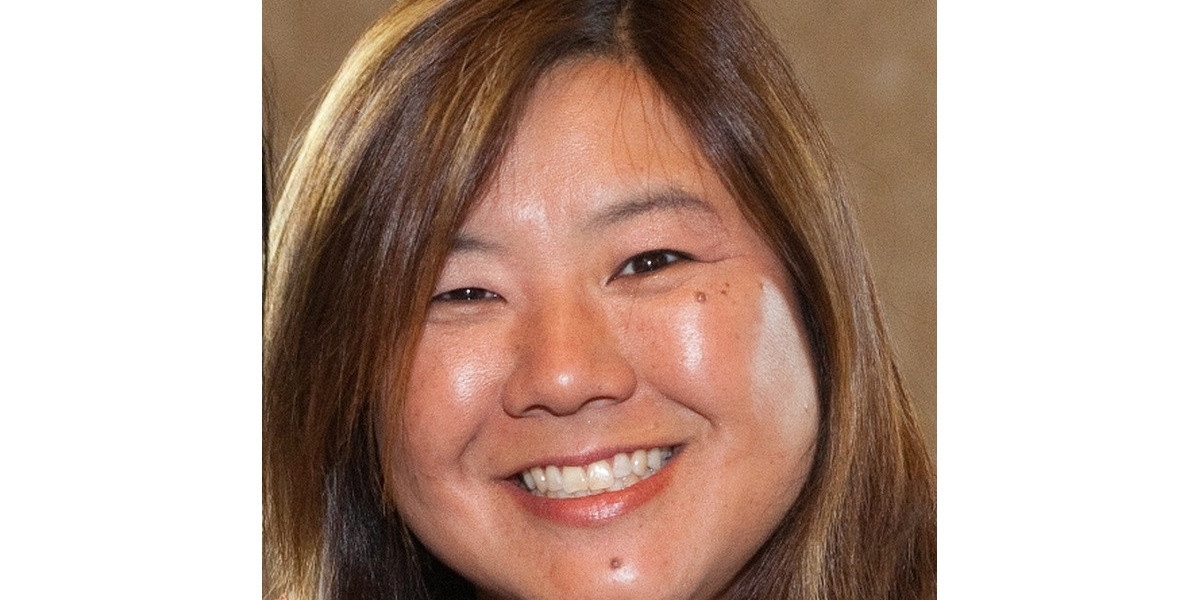Danielle’s Stage 2 Classical Hodgkin’s Lymphoma Story
Danielle D., Hodgkin’s Lymphoma, Stage 2
Symptom: Swollen lump on right side of neck and chest area that continued to grow
Treatment: Chemotherapy
Danielle’s Stage 2 Classical Hodgkin’s Lymphoma Story
Danielle was diagnosed with stage 2 Hodgkin’s lymphoma at 25 years old. Read her in-depth story about tests and biopsies, undergoing ABVD chemo and freezing her eggs to preserve fertility options.

- Name: Danielle D.
- Age when diagnosed: 25
- Diagnosis:
- Hodgkin’s lymphoma
- Stage 2
- 1st Symptoms:
- Growing lump on right side of neck (swollen lymph node)
- Tests & Biopsies:
- CT scan
- Needle biopsy
- Excisional biopsy
- PET scans
- Pulmonary function test (lungs)
- Blood work before every treatment
- Treatment:
- ABVD Chemotherapy Regimen
- 3 cycles
- Each cycle = 1 month, biweekly
- Total of 6 infusions
- 3 cycles
- ABVD Chemotherapy Regimen
- Fertility Preservation:
- Decided to freeze eggs before chemotherapy
- 2-week process
- Daily hormone shots
- Daily blood work
- Egg retrieval procedure (26 eggs)
- Decided to freeze eggs before chemotherapy
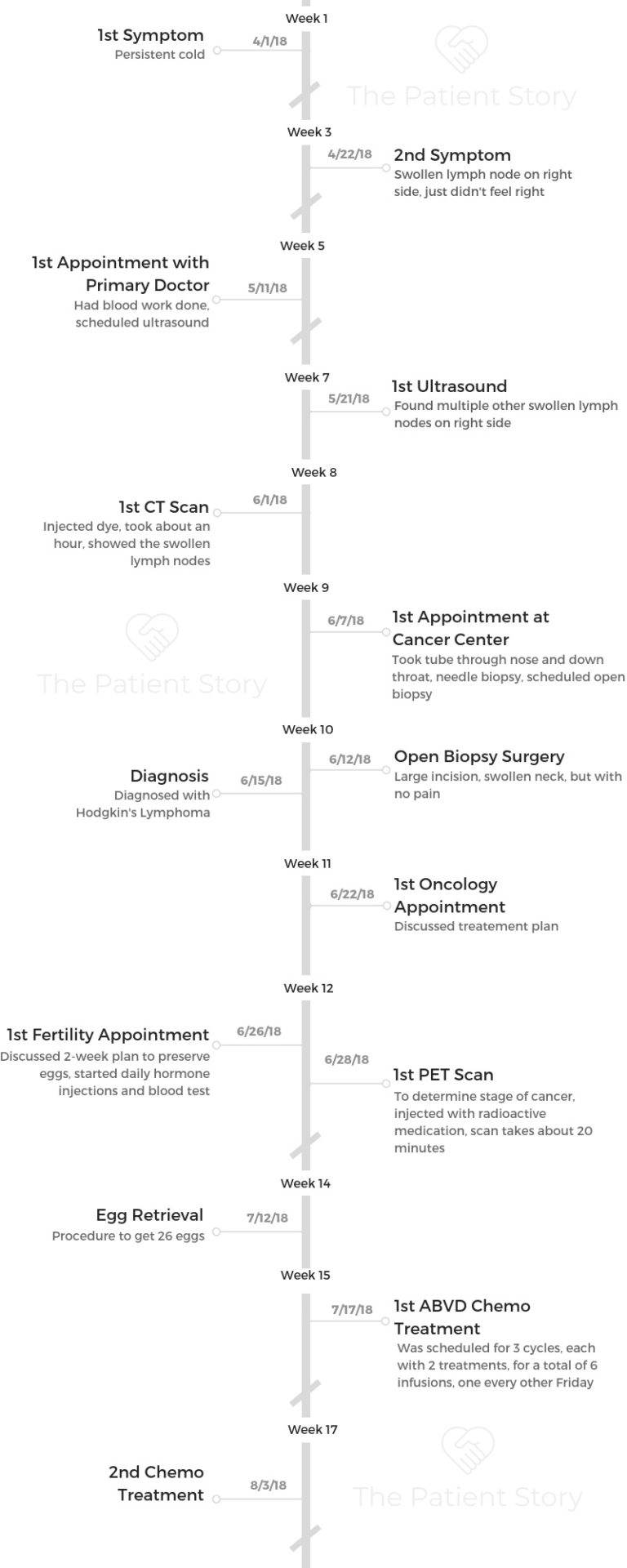
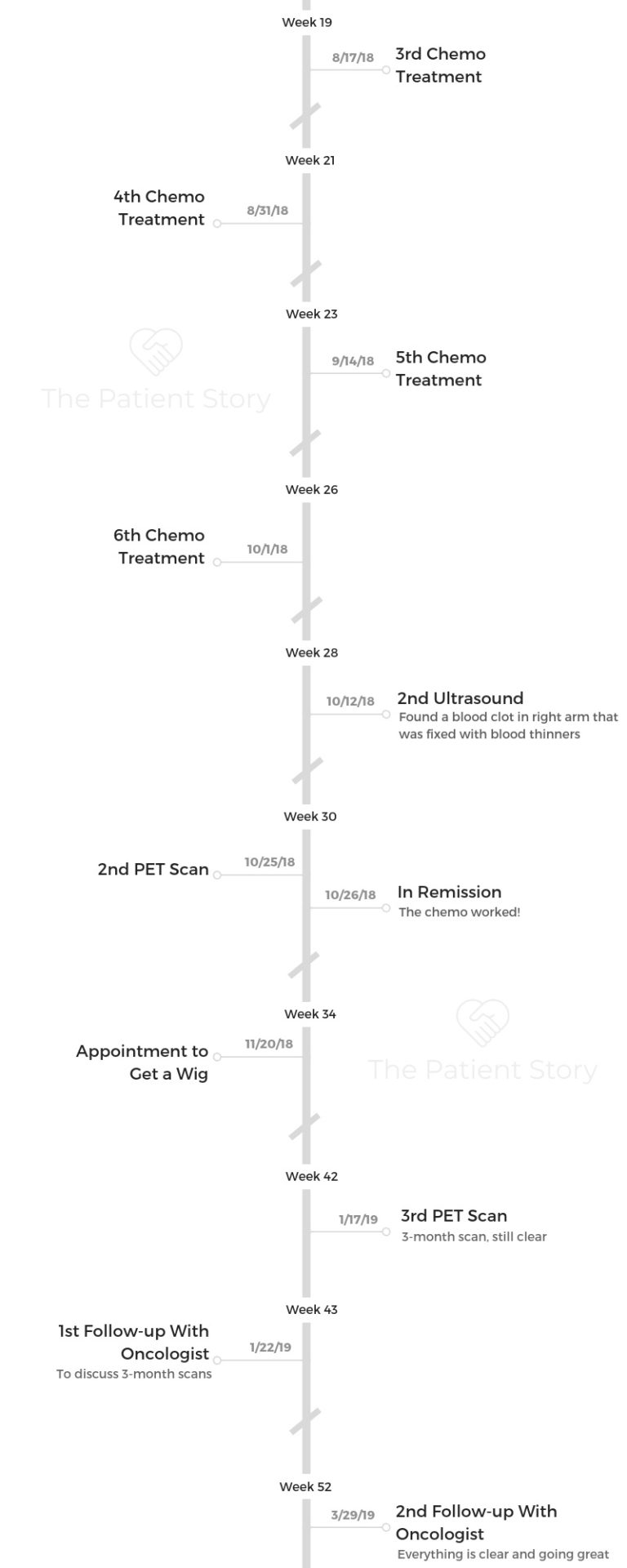
- 1st Symptoms & Tests
- What were the first symptoms?
- What made you go to the doctor?
- Describe the ultrasound
- How long did it take to get ultrasound results?
- Describe the CT scan
- How long did it take to get the CT scan results?
- Describe your meeting with the ENT doctor
- What’s the needle biopsy like?
- What was the excisional biopsy like?
- How long did it take to get the excisional biopsy results?
- Treatment Decisions
- How did you process the cancer diagnosis?
- How did you break the news to your loved ones?
- How did you decide where to get treatment?
- Did you get a second opinion?
- Describe the hospital you went to
- Any advice on choosing the right treatment center?
- Any advice before going into treatment?
- Being a self-advocate as a patient
- Chemotherapy
- What was your treatment plan?
- Describe the ABVD chemotherapy regimen
- Describe the chemotherapy process
- What were the chemo side effects?
- Tips on how to deal with side effects
- How did you decide not to get a port or PICC line?
- Your veins eventually became an issue
- Any advice on whether to get a port or PICC line?
- Post-Treatment Scans
- Hair Loss
- Emotions, Support & Care
- What were the hardest parts mentally and emotionally?
- What helped you through that stress the most?
- Talk about being young with cancer
- How did you approach dating during treatment?
- You want to help others now who’ve just been diagnosed
- Why was it important to find a cancer community?
- Were you able to ask people for support?
- How important was it to have caregivers?
- Work & Finances
- Fertility & Egg Freezing
- Survivorship
This interview has been edited for clarity. This is not medical advice. Please consult with your healthcare provider for treatment decisions.

Being diagnosed with cancer is definitely a scary thought, and it’s a very scary process. You don’t really know what you’re in for, but you do have a lot of people there for you.
Just stay strong. I think the attitude of it all through the whole process definitely helps a lot. Truly feel your feelings while going through everything; don’t hold anything in.
The positivity really does help, and it makes a huge difference through the whole treatment process.
Danielle D.
1st Symptoms & Tests
What were the first symptoms?
I really didn’t have any symptoms except for the one lymph node on my right side that was just getting bigger and bigger as time went on. It just wasn’t going down.
What made you go to the doctor?
I noticed that the lymph node wasn’t going down. It was just getting bigger, and it was only on one side. As soon as I started to feel other ones lower down my neck, it just didn’t seem right.
The day I ended up going to see my primary doctor, I just went in there and told her that I had this little lymph node and it wasn’t going down. She wanted to get blood work, and then I went out to get ultrasound done. In the ultrasound, that’s when we found several smaller lymph nodes.
Describe the ultrasound
It was the same exact day that I had gone and seen my primary doctor when I got the ultrasound.
I felt like my doctor had known that something was going on but wasn’t really quite telling me. I just felt scared in a way. Worried.
When had I gone for the ultrasound, I just felt like they were just subtle and nice. The one lady who had done it was very sweet, but you could tell she was really finding a ton of things on the right side just because she was taking a lot more time on that side than the left side.
The whole time I just kept thinking, “What if this is something very serious?” I just didn’t know what it could have been. It was almost like an ultrasound for a baby, but it was on my neck.

How long did it take to get ultrasound results?
It took about a week. My mom had been calling the doctors and saying, “What’s going on? What’s going on?” to push those results.
It was very hard because I knew, especially with my mom freaking out, something wasn’t right. I just don’t know why it took them so long to find out these results.
I was just in a panicked stress about if they had known something and were trying to come up with some plan, but it was taking longer than what it should have.
I was angry, upset, worried. My stress and anxiety were going up.
Describe the CT scan
After the ultrasound, he really didn’t quite give me any result except for the fact that I had a lot lymph nodes, and they wanted to then go through the CT scan.
So I went through the CT scan, which also showed lots of smaller lymph nodes.
I was actually very nervous during the CT scan. I didn’t know. Once again, just going through all of this not knowing what’s going on, just knowing there’s something not right.
When I found out I needed to get an IV, I was just so nervous because I didn’t expect that. I was terrified of needles, so I was a wreck the whole time trying to figure this out and what was going on.
The nurses were great. They were so sweet, but I was just all stressed and worked up. I laid down, and they pushed the medication through. I was in this machine where they scanned my entire neck. That also showed all of the swollen lymph nodes.
It probably took about an hour to get me all done. I was just going with it, but also being so nervous. I just didn’t understand. I didn’t even really know what a CT scan was.
It was painless, except when they injected the dye. It was an interesting process, the way that it makes you feel.
They tell you, “Okay, you’re gonna feel like you’re going to have to go to the bathroom. You’re going to have to pee.” That’s exactly what it felt like. It’s a weird feeling. I just didn’t know what to expect.
How long did it take to get the CT scan results?
It really didn’t take long for me to know that I had an appointment with a doctor at Wilmot Cancer Institute, because I had seen it on my chart before I was even told by my doctor.
Once again, I knew that they had figured that something was going on, but they didn’t want to say that yet. I think they were just trying to wait for all the testing and everything to really confirm that this may be what we’re looking for.
»MORE: Dealing with scanxiety and waiting for results
Describe your meeting with the ENT doctor
I went there with my mom. Just seeing the word “cancer” in the place that I was going to, I was like, “Wow, there’s the chance that I could have cancer.”
I even got a new patient folder with all this information on it, like how there’s support groups for cancer patients and all this. I still didn’t know that I was probably going to be told later on that, “Yeah, here you have cancer.”
There were just so many doctors and nurses around. I still had no idea what was going on. They were doing a lot of testing. They had to put a tube down my nose, into my mouth, taking a look basically at everything in my neck.
Then they told me, “Okay, we’re most likely looking at lymphoma. But what we’re going to do is a needle biopsy, and that will rule out any type of infection.”
They went through with that, and it came back right then and there that there was no infection.
What’s the needle biopsy like?
The needle biopsy really wasn’t bad at all, but of course the fear and panic of a needle going into your neck is a little scary, so I had the nurses holding my hands and everybody there for me. It really wasn’t that bad at all.
They took a needle to my neck, and then they were able to take some of the lymph node out just to get a sample to it, to look through and see if there was any type of infection. The doctor had told me right then and there they would know if it had an infection or not.
What was the excisional biopsy like?
After that, they told me, “We’re definitely looking at lymphoma, and we do want to have you have an open biopsy surgery done.”
That was within a few days. I had to prepare for it. They gave me all the papers. All of a sudden, I’m signing all these papers for my first surgery, and that’s when I knew, “Okay, I’ve got cancer. Now they just need to find out what type.”
When I went to the hospital with my mom, we made it very early in the morning. I couldn’t eat or drink or anything.
Once I got in there, I looked up at the screen and saw that there were numbers. Really, you’re a patient there, and you’re just a number. It was all this new experience. I’ve never had surgery in my life.
I knew I was in good hands with the nurses and the doctors there. I got all ready, they put the IV in, and then they did a very good job of explaining everything.
I was just glad my mom was there. As soon as they pushed me down to the operating room, I could feel myself going out of it.
The next minute I know, I’m waking up. I didn’t feel any pain or anything, so I was like, “Oh wow, it’s done.”

I grabbed the mirror that the nurse had given me to look at my neck. I could see it was very swollen, and there was the huge incision. I just can’t believe that that had just happened.
I really am very surprised with how much I never felt any pain or anything. I was just extremely tired and a little out of it, but other than that, I really didn’t have any pain.
How long did it take to get the excisional biopsy results?
After the surgery, I think it was about 2 days. I got the call, and they told me they were gonna call me with the results.
I was waiting and waiting, and then I finally got the call. He had told me right then and there it was Hodgkin’s lymphoma.
Treatment Decisions
How did you process the cancer diagnosis?
I just remember I went home and I did all my research. I was looking it up. I didn’t really quite know about lymphoma or what types. I just felt like all of a sudden I was educating myself on all of these types of lymphomas and which one I could possibly have.
I got the call while I was at work. I had already told a lot of my coworkers. They saw everything that I was going through with testing and everything, so it wasn’t a shock to anybody.
It wasn’t even a shock to me once I got that call from the doctor. He told me I had Hodgkin’s lymphoma.
He said, ‘Danielle, I hope I’ve prepared you enough for this.’
I said, ‘Yeah, you really did. You prepared me. I’m just ready to do whatever I have to do to get rid of it.’
I really wasn’t aware of what I was going into, but I just knew, “Okay, stay strong. You’re gonna get through this. I have amazing friends and family who are gonna be there for me.”
»MORE: Patients share how they processed a cancer diagnosis
How did you break the news to your loved ones?
I texted some of my friends. My coworkers, I feel, just knew. I told them, “This is what we’re looking at.” They knew it was lymphoma, so I just mentioned, “Yep, it’s Hodgkin lymphoma.”
With my parents, I called them both up and told them it is Hodgkin’s lymphoma. Because I feel like the testing took so long with all of that and we were very prepared on what we were going to be told, I think the actual results weren’t a shock at all to anybody.
It was getting that it’s confirmed, and now it’s time to get treatment done.
»MORE: Breaking the news of a diagnosis to loved ones

How did you decide where to get treatment?
I was just placed right over at the cancer center by the doctors, and I’ve always heard really good things about it. I know a lot of people, some family friends, who have gone there.
I really liked how all the doctors and nurses treated me there. I was really happy that I was placed there.
Did you get a second opinion?
I never really did get a second opinion just because I figured that I was in a good place, and we had caught it early. I figured they knew what they were talking about.
They already know of a really good plan for Hodgkin’s lymphoma treatments and what has cured past patients. If it was a different type of maybe a more difficult type of cancer, I think I would have done more looking around to make sure. I think it was very straightforward, so I was like, “Okay, I’m ready.”
Describe the hospital you went to
I was at a large hospital. I’ve always been a person that likes to be around more people. I was happy to see that I wasn’t the only one there, even though I was the youngest that was there.
I knew that there were other people around me. Even in the pods, getting treatment, it was nice to always be around people. I did really enjoy the large hospital.
I think that it was hard to see and look around. I was the only young cancer patient. I probably saw one other person who was my age there one time.
A lot of the time, it was all older people. I felt a little lost and thought, “How did this happen?” But there were really no negative things about this place. I really did love it a lot.
Any advice on choosing the right treatment center?
I think that looking around and seeing the employees and the nurses and doctors there, being positive, and always wanting to cheer you up, that’s a huge thing. That makes a huge difference.
I think, too, go to a place where there are a lot of organizations and groups to help out. They always had massage therapists there. They were always looking out just to help out cancer patients specifically with stress and anxiety. There were so many groups just right there. That’s what I loved about that place.
Any advice before going into treatment?
I know that with my treatment plan, it was always known that I was gonna do 3 cycles, or 6 treatments, of ABVD chemo, but then they were also trying to get me to do radiation.
I’m glad that I chose not to do radiation. When they do come up with a plan, just know what’s best for you and your body.
Just know your options.
Being a self-advocate as a patient
When I was being told my options, I just thought, “Okay, well, you’re telling me that there is radiation that I could do, but also that it could increase my chances of getting breast cancer because it would have been too close to my breast at such a young age.”
That wouldn’t have been right. So why add that on if I know that chemo can just help me out?
Maybe also have a plan, but just take it step by step. You don’t always have to go with the whole plan. Just take it day by day, step by step.
If chemo does it, then why go and try to add more to it if you don’t need to?
»MORE: How to be a self-advocate as a patient
Chemotherapy
What was your treatment plan?
I was told that I was going to have to do 3 cycles. Each would be 2 treatments of ABVD chemo. Those are the 4 drugs that I would have to be given. A chemo treatment one day would be about probably 4 hours.
Describe the ABVD chemotherapy regimen
There were 6 infusions total. For every cycle, it’s 2 treatments, so there was 1A, 1B, 2A, 2B, 3A, 3B. I made my chemo treatment days on Fridays, and it would be every 2 weeks.
I would get one treatment on Friday, and then the next Friday it would be a free day. Then Friday after that, I would get my next treatment.
So you’d do 1A and then 2 weeks later 1B. Then again it would start 2A, then 2 weeks later 2B.
Describe the chemotherapy process
I’d first go and get blood work. After that, I would get assigned a pod and just sit there in the chair. They would put the IV in.
They’d give some medications, like the steroids and all of that, to help a little bit. I did ask for anxiety meds because I was getting so worked up and worried.
Then they started off with the first 2 medications, one each at a time. They would have to sit there and have to push the medication through the IV slowly.
They had a little timer, and at first it was okay. In the first one, it was just like, “Well, what is all this?” I was learning it all myself, taking it all in.
Then the last 2 medications were through the bag, which they would just drip into the IV. As time went on through treatments, it got to me more and more with nausea and all my emotions.
Each treatment got harder as time went on, but I always had support systems there. I was always allowed 2 people at a time.

What were the chemo side effects?
Burned skin
During the treatment I was okay, and then the next day I would wake up and feel a little out of it, a little strange. My face would almost look like I had just gotten this sunburn. It was weird. It made my skin very red, and then I would be okay.
Fatigue
By the second day, which would be a Sunday, I would just sleep for about 16 hours. Mondays are my days off from work, so it was nice that Mondays I was able to just take it all in and just relax.
Nausea
As the week went on, it was more nausea. Dealing with a lot of that. Sometimes I’d feel a little dizzy.
Jaw pain
I would try to eat as much as I can, but I would start to experience jaw pain. That first week after treatment, I was really experiencing all the symptoms.
Then week 2 would come around, and all of a sudden, I was back to myself a week later, just to go and get treatment again in 4 days.
I just know that with the jaw pain, that was scary. I actually ended up calling my oncologist about that. That I really didn’t know what to do. I just rode it out.
Constipation
Constipation was actually my worst symptom during chemo.
I had never experienced that before chemo. The doctors had told me about what medication to get before I start treatment, which I did. I went out and got those, but nothing was working.
It took me a very long time to find out what I could do, but that had me in bed for a while because it became very painful.
MiraLAX was the one that I ended up finding out on my own that would be the best that would work. Friends and family were the ones who had recommended I get that, which is very easy to purchase. I was able to grab that and just start that, which ended up helping a lot.
Halfway through my treatments, I no longer had to deal with that anymore. I got better with that, but that was after I was trying all of these other things that my doctors were telling me about, medication-wise.
Tips on how to deal with side effects
Right off the bat, when you’re told that you need to start treatment, ask about anything that could help with any type of symptoms that you may get or may experience. Just get any advice that you can from them.
Also, try to talk to your family and friends about it, because they may tell you things that the doctors may not tell you. Some of the symptoms could be taken care of by doing other things besides medications.
How did you decide not to get a port or PICC line?
Weirdly, a port was never talked about. When I was doing my research on Hodgkin’s lymphoma, I had seen that a lot of people were getting this port or a PICC line.
I was wondering why that was never brought up, but I was almost like, “I don’t want to bring that up because I don’t want to have that if I can try to do everything through an IV.” That’s what I wanted to do, so I just went with it.
»MORE: Read patient PICC line experiences
Your veins eventually became an issue
After some time during the end of my treatments, my veins were getting a little destroyed. It was about 2 infusions that I had left where it was very hard for the nurses to find a really good vein, even the nurses trying to just simply take blood.
It was very hard, and as time went on, after my last treatment, I ended up getting a blood clot in my right arm.
If I needed 6 more treatments, I would have probably needed to get a port. I think because we had caught it so soon, they were able to avoid the port and just use an IV.

Any advice on whether to get a port or PICC line?
I would only get a port if I really needed to go through maybe 12 or more treatments.
When it was getting really bad to find a vein, I did keep thinking, “Oh no. What if I do need more treatments? I’m going to probably need to go to get a port.” It never got to that point, thank goodness.
I was glad that I did just go through the IV process. They were able to eventually always get a good vein. With good nurses, they were always to find something.
Post-Treatment Scans
How many PET scans did you undergo in all?
After my excisional biopsy, they did a PET scan to find out exactly the staging of the lymphoma.
After I was done with all 6 of my treatments, they wanted to do a PET scan to make sure that the chemo had worked, which it did.
Once I was told I was in remission, they wanted to schedule a PET scan for about a month or 2 out. When they had realized that we had 2 clear PET scans after treatment, they did not want to any more. I had a total of 3 PET scans.
Describe the PET scan
The first one that I had gone through was a learning experience for me for sure. I had no idea what I was getting into, but you go in there and they inject you with the radioactive substance through an IV.
They check your blood levels again with just a prick to the finger. You do have to drink this liquid, which lights up all of your organs.
After that, you have to wait an hour. Once the hour passes, you go into the scan. You lie down. They strap you in a little bit. If you are claustrophobic like me, they have medication options for you if you want.
I just kept my eyes closed and just went through it. You slide in and out of the machine through the whole process.
Sometimes they’ll play music for you if that helps, and it takes about 15 or 20 minutes. They take a few pictures. Then after that, they’ll come out and unstrap you, and you’re all set to go.
How long did it take to get the PET scan results?
It would take about 2 to 3 days after usually for the results to be returned back to me.
What’s “scanxiety?”
Scanxiety is a real thing. I really experienced that a lot every time. Especially as time went on, it just got worse. Even after treatment, it brought up memories of when I was in there before, when I had the cancer in me. So scanxiety is definitely a thing.
I think it’s all built up before you go into a scan. You have all of this anxiety. You just pray that it’s gone, or you pray that the chemo’s working.
Or what if it’s just gotten worse? It’s all these things in your mind that are just running through your mind, and you’re just sitting there questioning everything.
A lot of my experiences from treatment and chemo [were] being brought up, and then you just sit there thinking, “How could this be?” A lot of questions are just raising the anxiety of it all.
How did you get through the scanxiety?
I really tried to just stay focused, be strong, think positive and just pray that the chemo worked. If you still have cancer in you, you’ve just got to keep the fight going.

Hair Loss
When did you start to lose your hair?
I started to lose my hair exactly a week after my first treatment. I had so much hair, so I was like, “All right, as long as I can’t really notice right now, I’m just going to go with it.”
When I was brushing my hair a week after my first treatment, I could tell it’s actually really happening. I always told myself I’d deal with it when it starts to happen. Now it’s actually happening, so I broke down a little bit.
I couldn’t believe it was actually happening. It was reality. Then every time I was in the shower, it was just hair everywhere. It was constantly on my hands.
Describe the hair loss
For a very long time, my hair held out. It was thinning and thinning and thinning. It got to the point where I just decided, “Well, you still can’t tell too much.” Nobody else could tell, so I just went with it.
Then time went on where the top of my head was getting a little bit thinner and balder, very flat looking. I always would wear a hat. Eventually, as time went on, the hat wasn’t even working. I really didn’t have any strands of hair left.
My friends and family were telling me I needed to look into a wig. It took me a very long time to come to the realization I’m gonna need to get a wig.
I started to do my research. It wasn’t until I actually finished treatment, around the holidays coming up. I was just like, “Okay, I do need to get a wig. A hat is not working anymore. I really have no more hair.”
